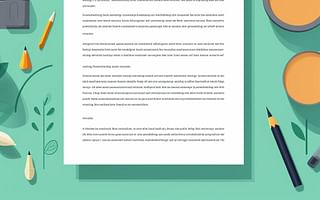📝 Test Your Knowledge: Understanding the Ideal Paragraph Structure
Understanding the Ideal Paragraph Structure
Test your knowledge on paragraph structure in essay writing.
Are you struggling to structure your paragraphs effectively in your essays? Understanding the ideal paragraph structure is crucial for enhancing readability, improving comprehension, and increasing engagement. Let's test your knowledge on paragraph structure in essay writing with this interactive quiz.
Question 1: Why is structuring paragraphs efficiently important in essay writing?
- It enhances readability
- It improves comprehension
- It increases engagement
- All of the above
Correct answer: All of the above. Structuring paragraphs efficiently enhances readability, improves comprehension, and increases engagement.
Question 2: What are the key components that make up a well-structured paragraph?
- Topic sentence, supporting sentences, and concluding sentence
- Introduction, body, and conclusion
- Thesis statement, argument, and counter-argument
- Hook, thesis statement, and conclusion
Correct answer: A well-structured paragraph consists of a topic sentence, supporting sentences, and a concluding sentence.
Question 3: What is the role of coherence in paragraph structure?
- Ensures the logical flow of ideas
- Uses linking words and phrases
- Supports the topic sentence
- Concludes the paragraph
Correct answer: Coherence ensures the logical flow of ideas within the paragraph.
Question 4: What is the role of cohesion in paragraph structure?
- Supports the topic sentence
- Concludes the paragraph
- Uses linking words and phrases
- Ensures the logical flow of ideas
Correct answer: Cohesion in paragraph structure involves the use of linking words and phrases.
Now that you've tested your knowledge on paragraph structure, let's dive deeper into each component. A well-structured paragraph starts with a topic sentence, which introduces the main idea of the paragraph. Supporting sentences provide evidence, examples, or explanations to support the topic sentence. Finally, a concluding sentence wraps up the paragraph and summarizes the main points.
Coherence is essential for maintaining a logical flow of ideas within the paragraph. It ensures that each sentence connects smoothly to the next, allowing the reader to follow your argument effortlessly. To achieve coherence, use transitional words and phrases that help establish relationships between ideas.
Cohesion, on the other hand, focuses on the use of linking words and phrases to create a sense of unity and connection within the paragraph. These words and phrases act as signposts, guiding the reader through your essay and making it easier to navigate.
By mastering paragraph structure, you can effectively convey your ideas and arguments in a clear and organized manner. Remember to always start with a strong topic sentence, provide supporting evidence, and wrap up with a concluding sentence. Additionally, ensure coherence and cohesion within your paragraphs to maintain a logical flow and enhance the overall readability of your essay.
Now that you have a better understanding of paragraph structure, you can apply this knowledge to your own writing and make your essays stand out. Happy writing!
For more information on essay formatting and structure, take the interactive quiz.
To learn about essay outlines, take the interactive quiz.
If you need guidance on formulating an effective essay outline, check out this step-by-step guide.
To engage readers from the start, learn about crafting effective essay hooks with this interactive quiz.
For tips, examples, and structure of expository essays, take the interactive quiz.
For a comprehensive guide on informative essays, from choosing a topic to crafting your argument, check out The Blueprint of an Informative Essay.







